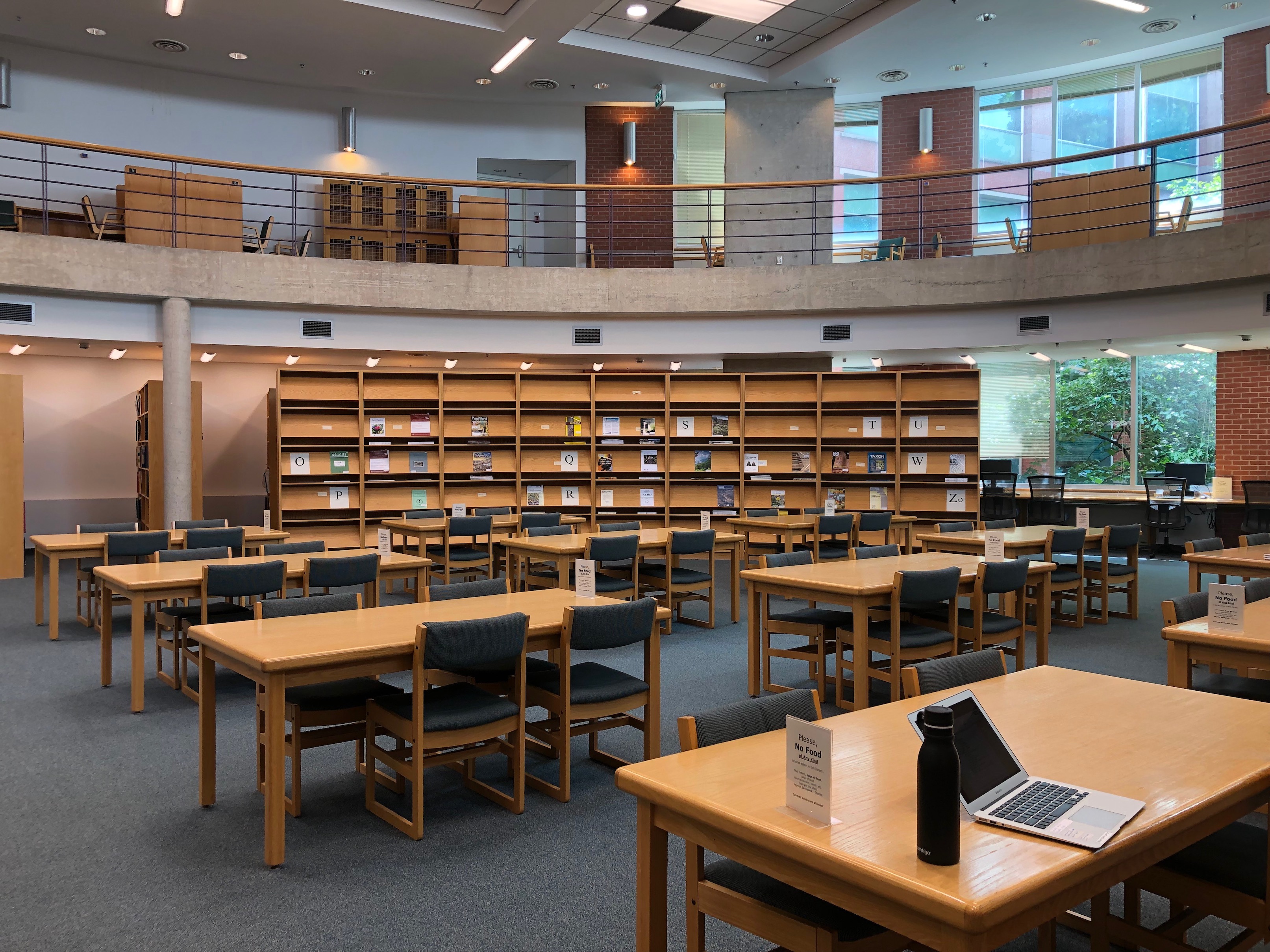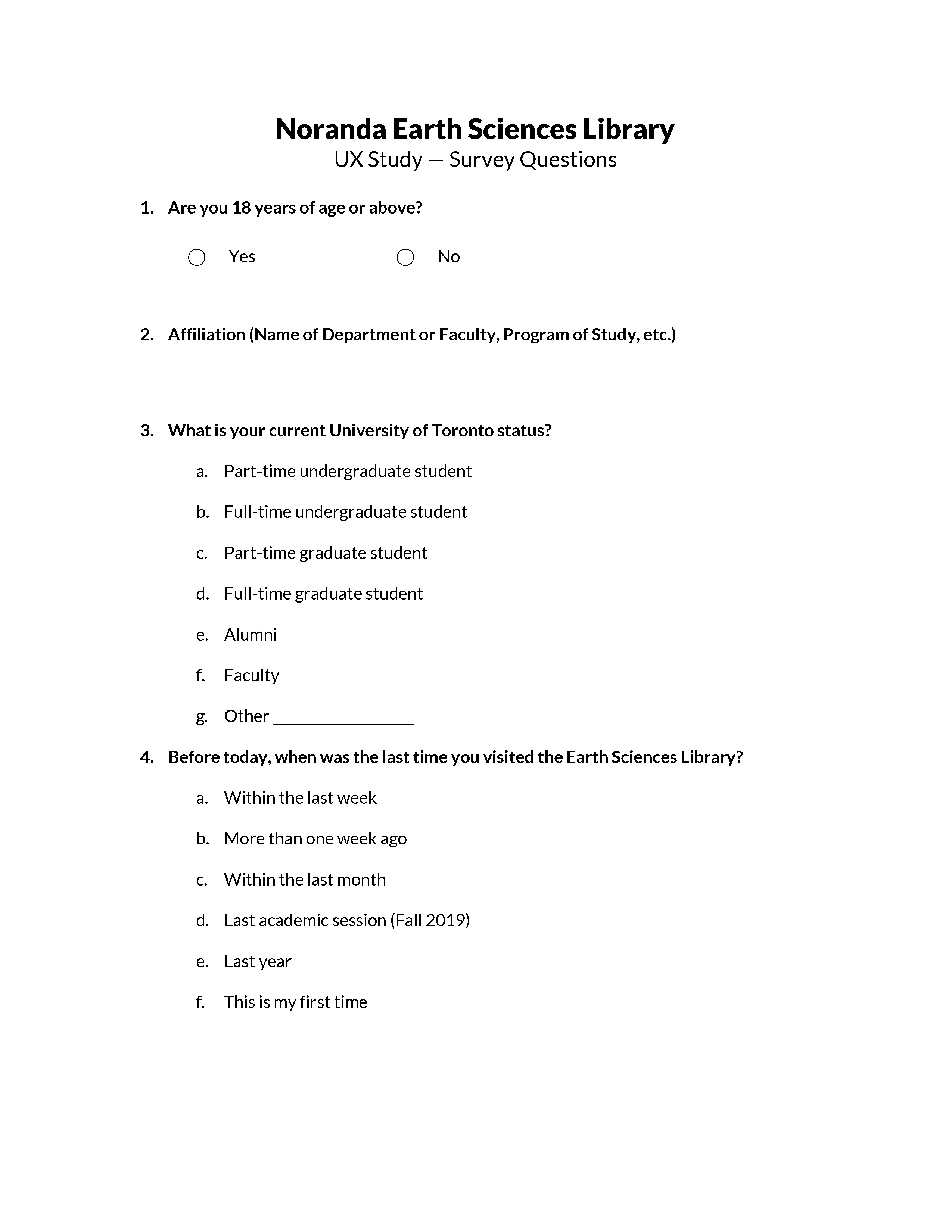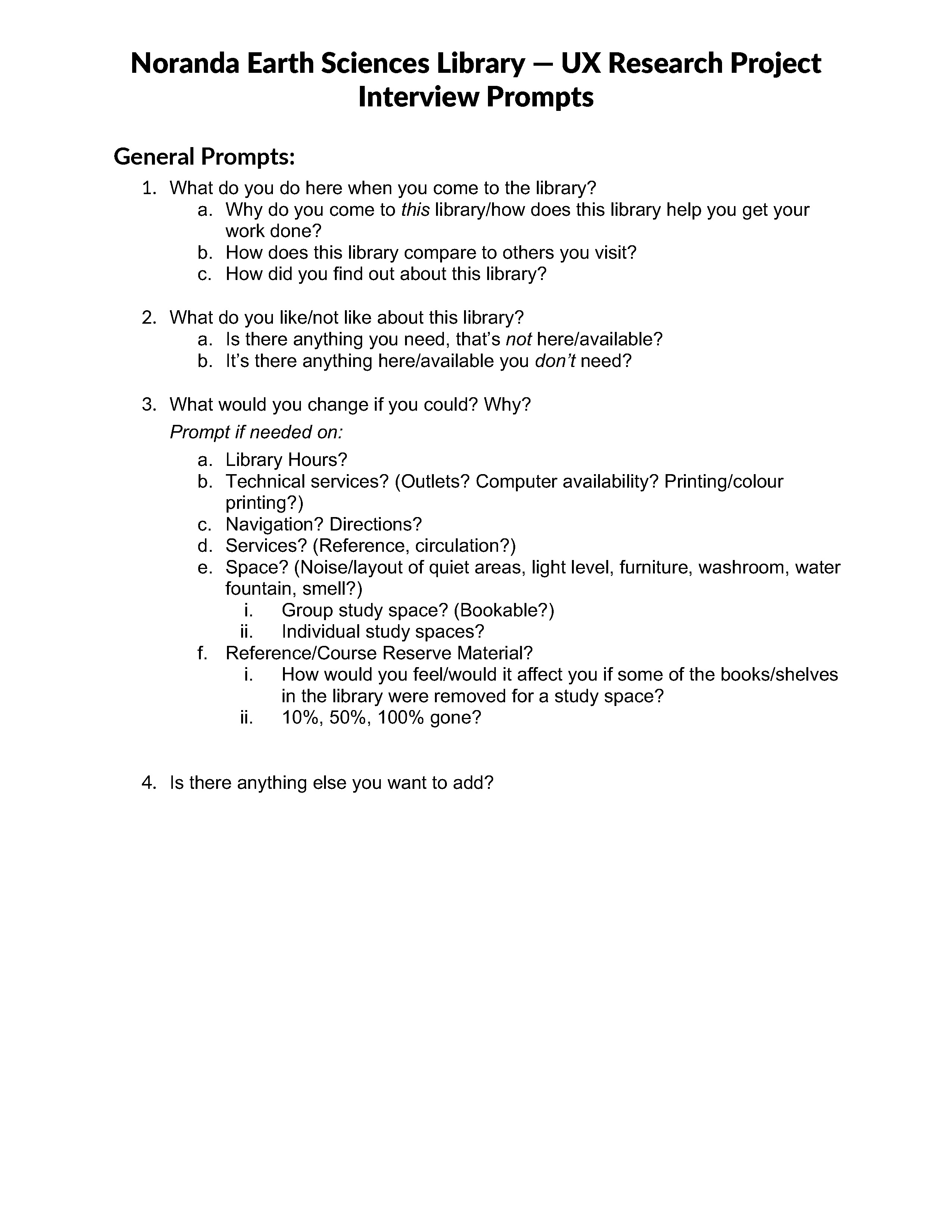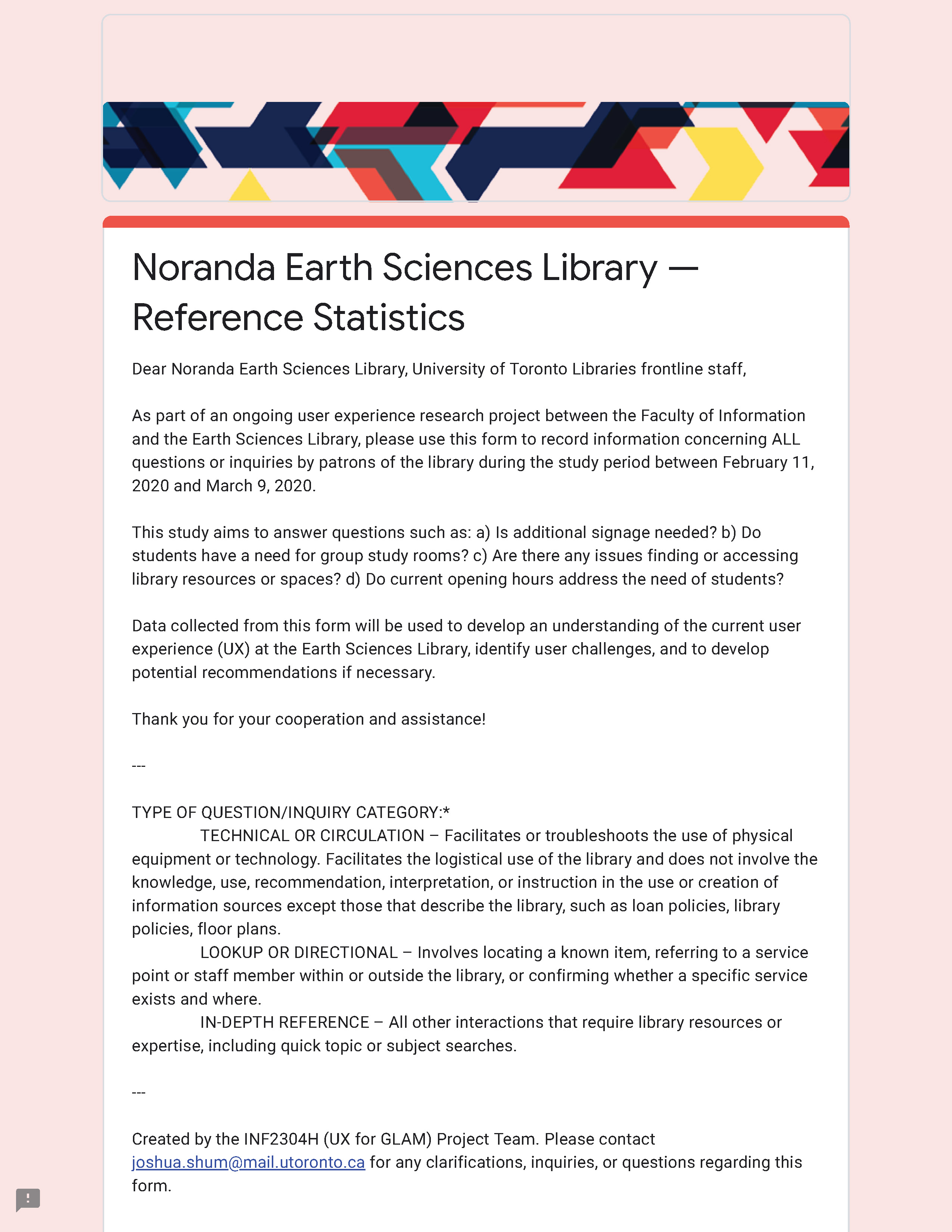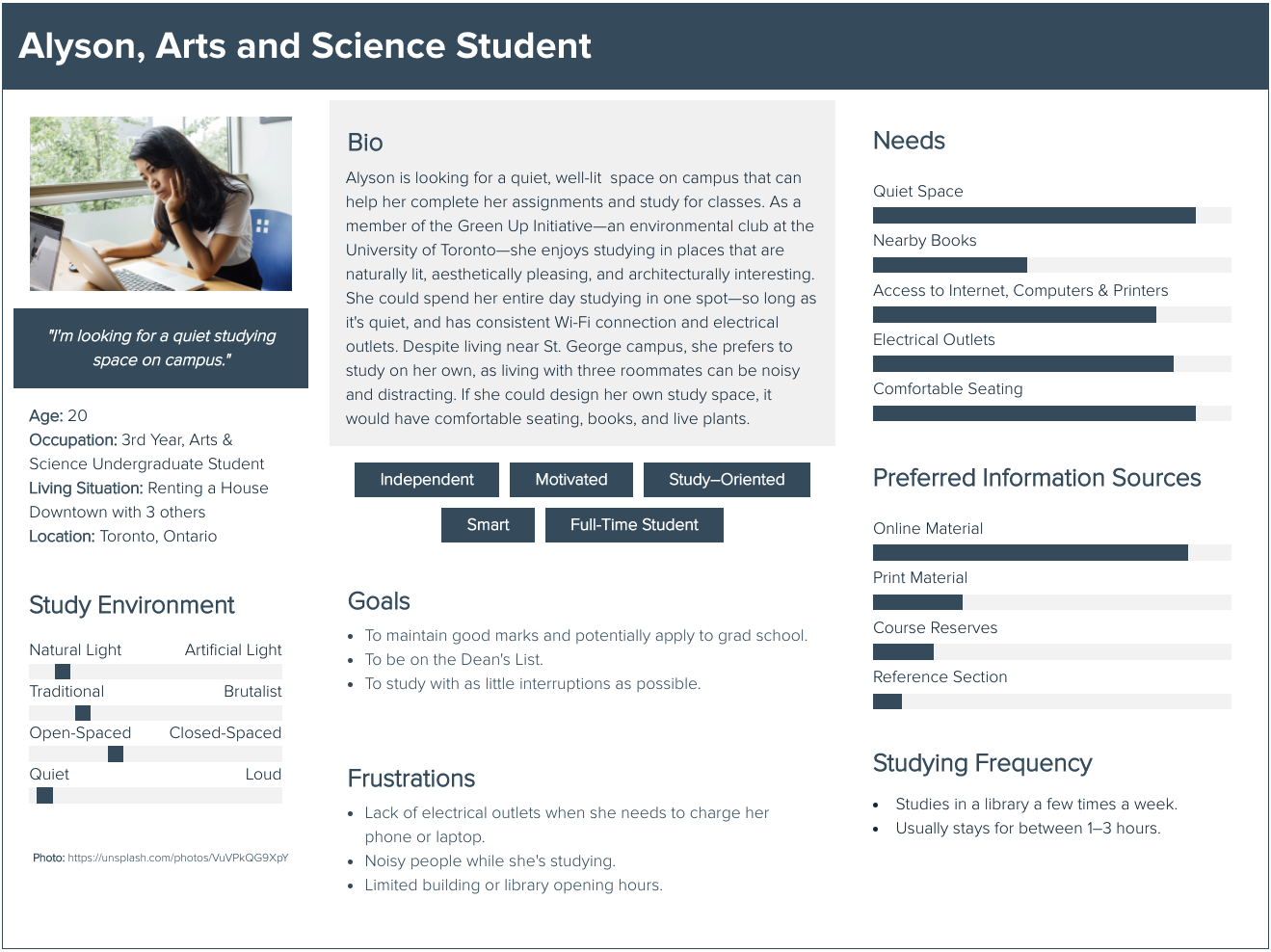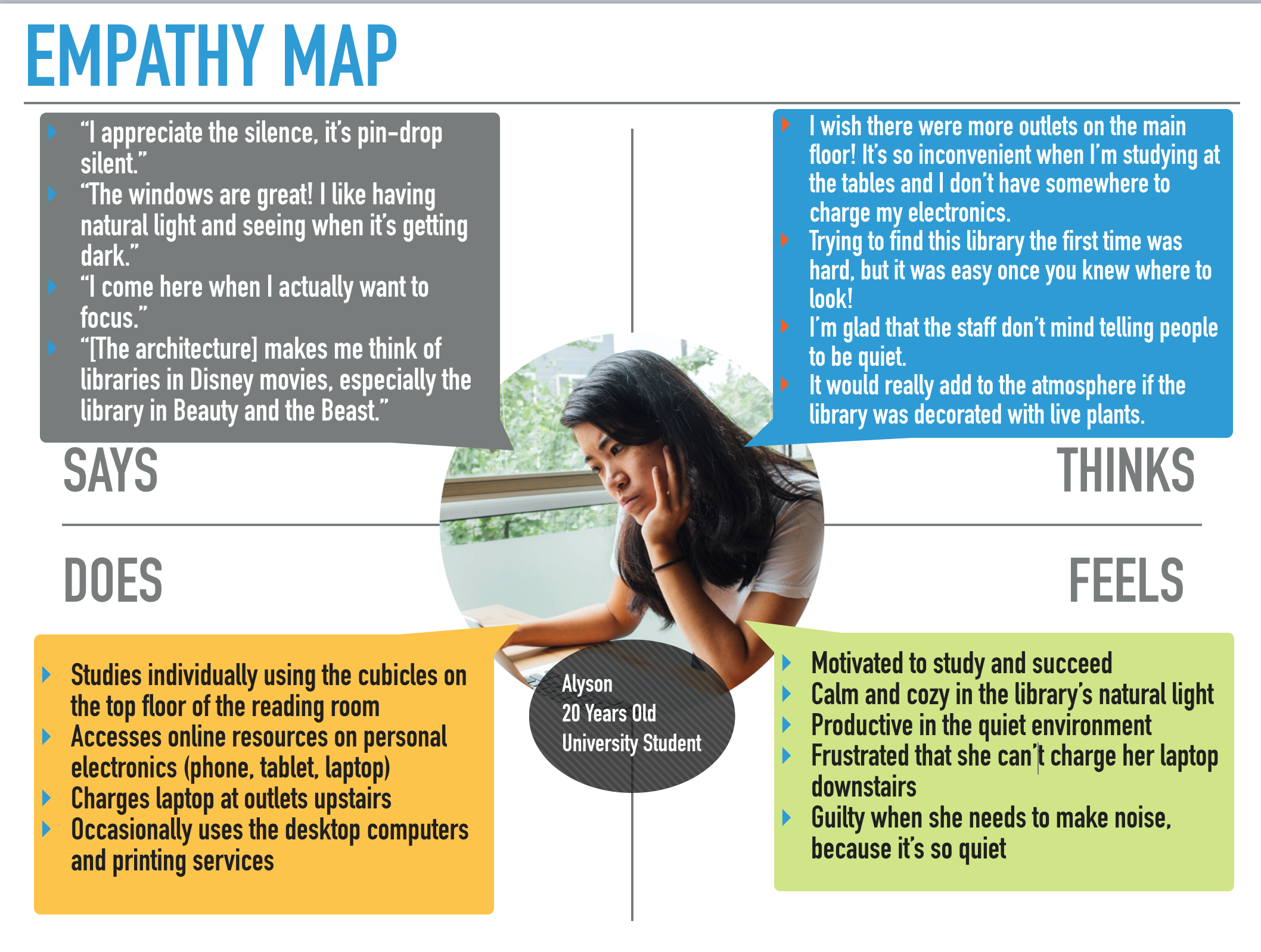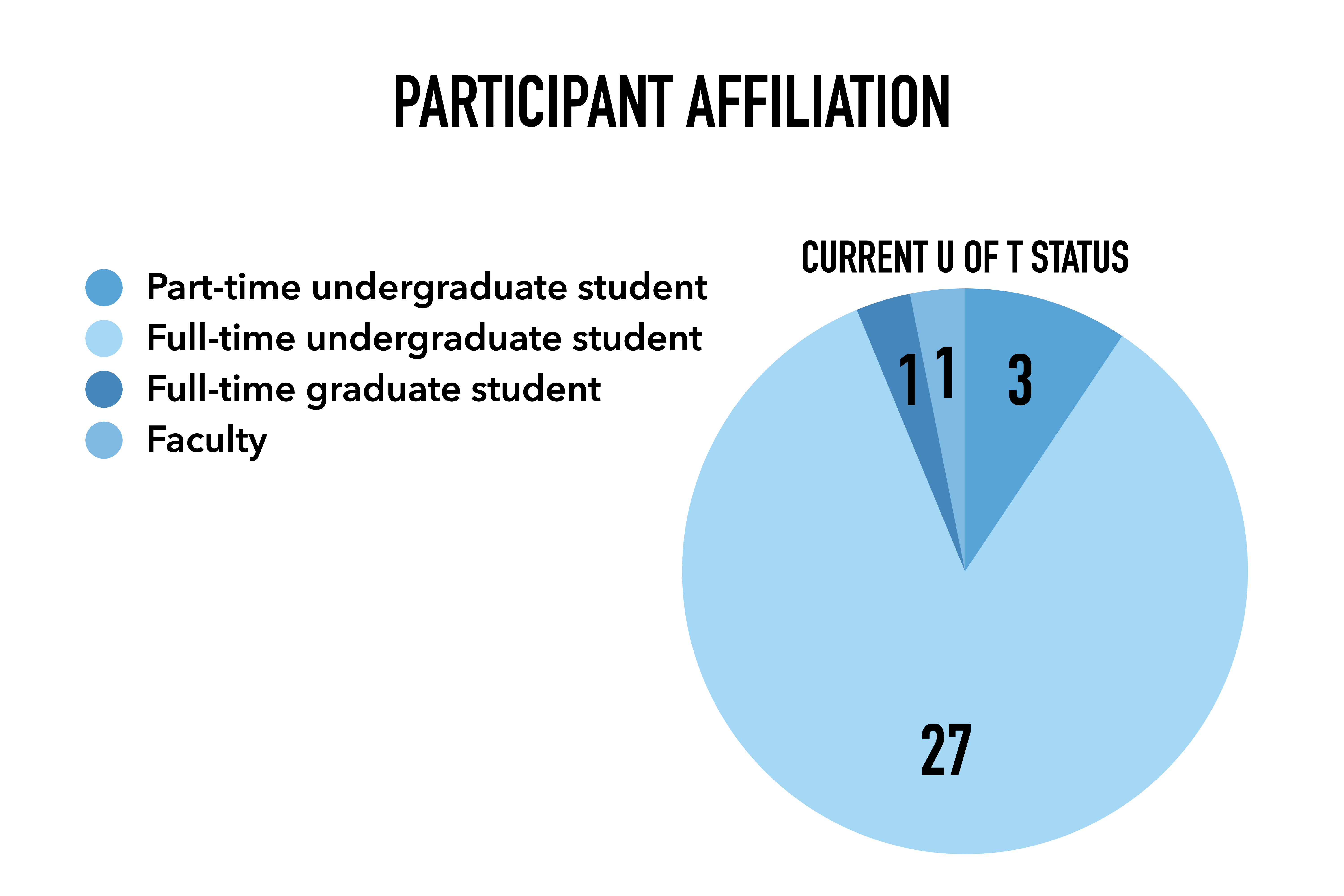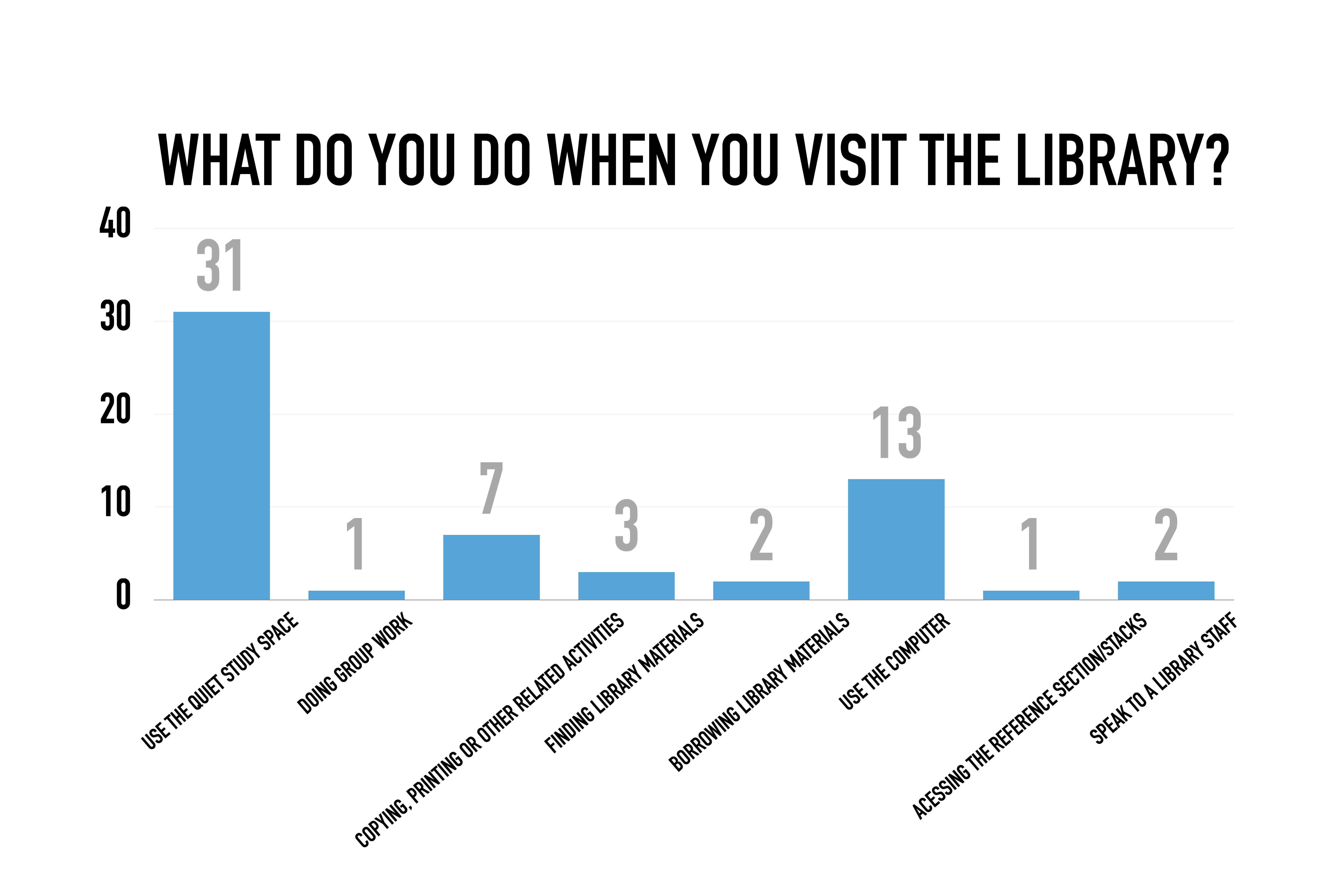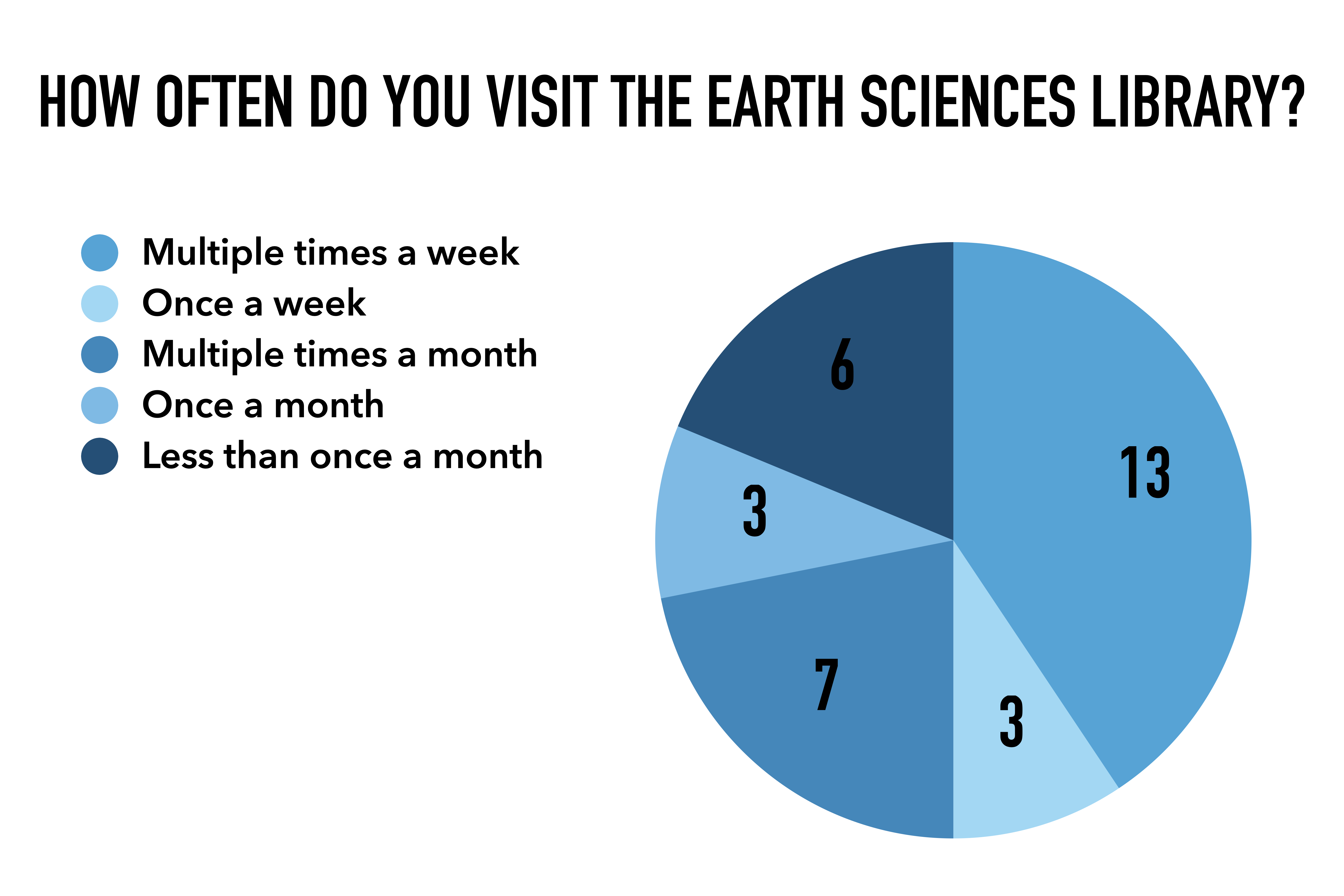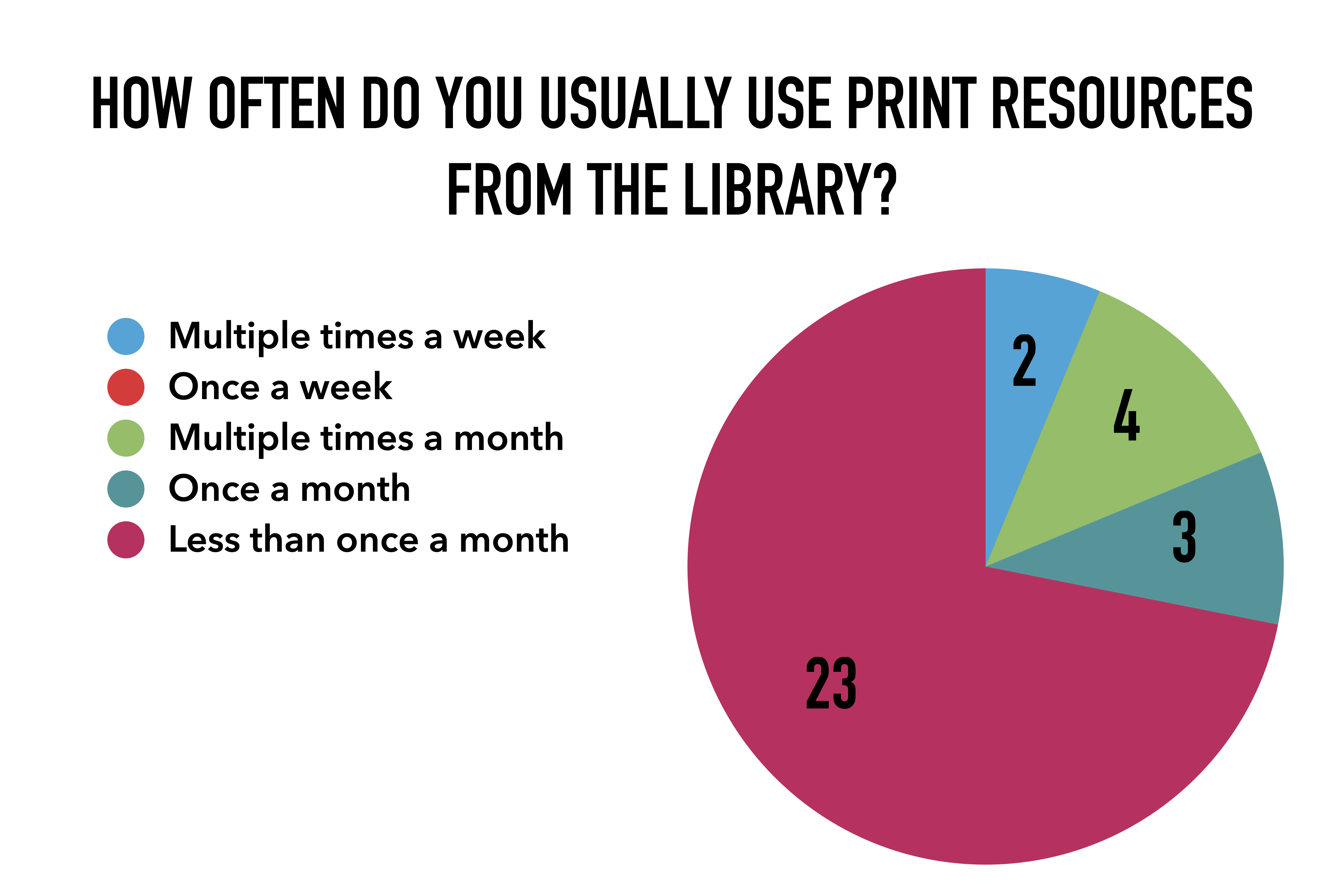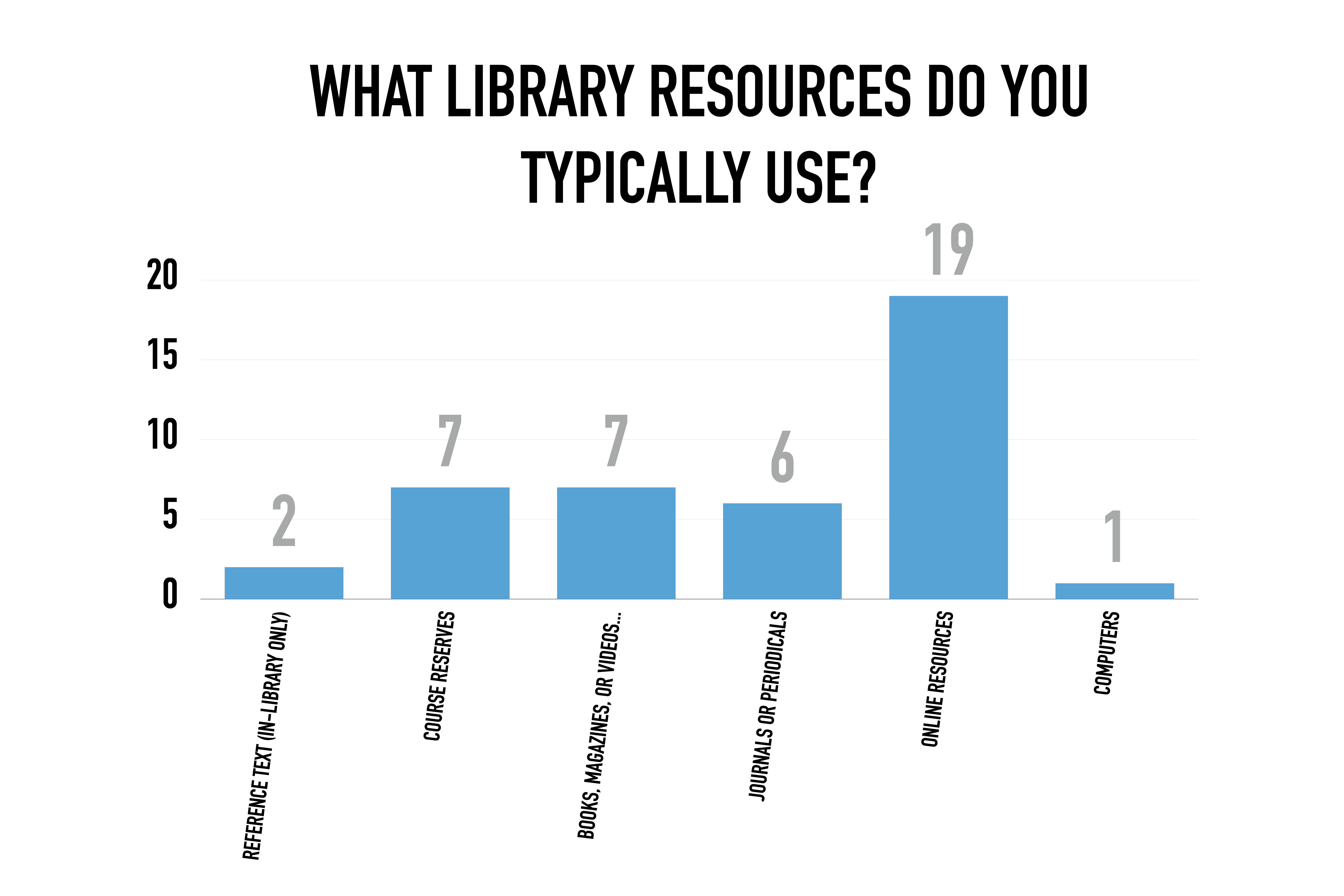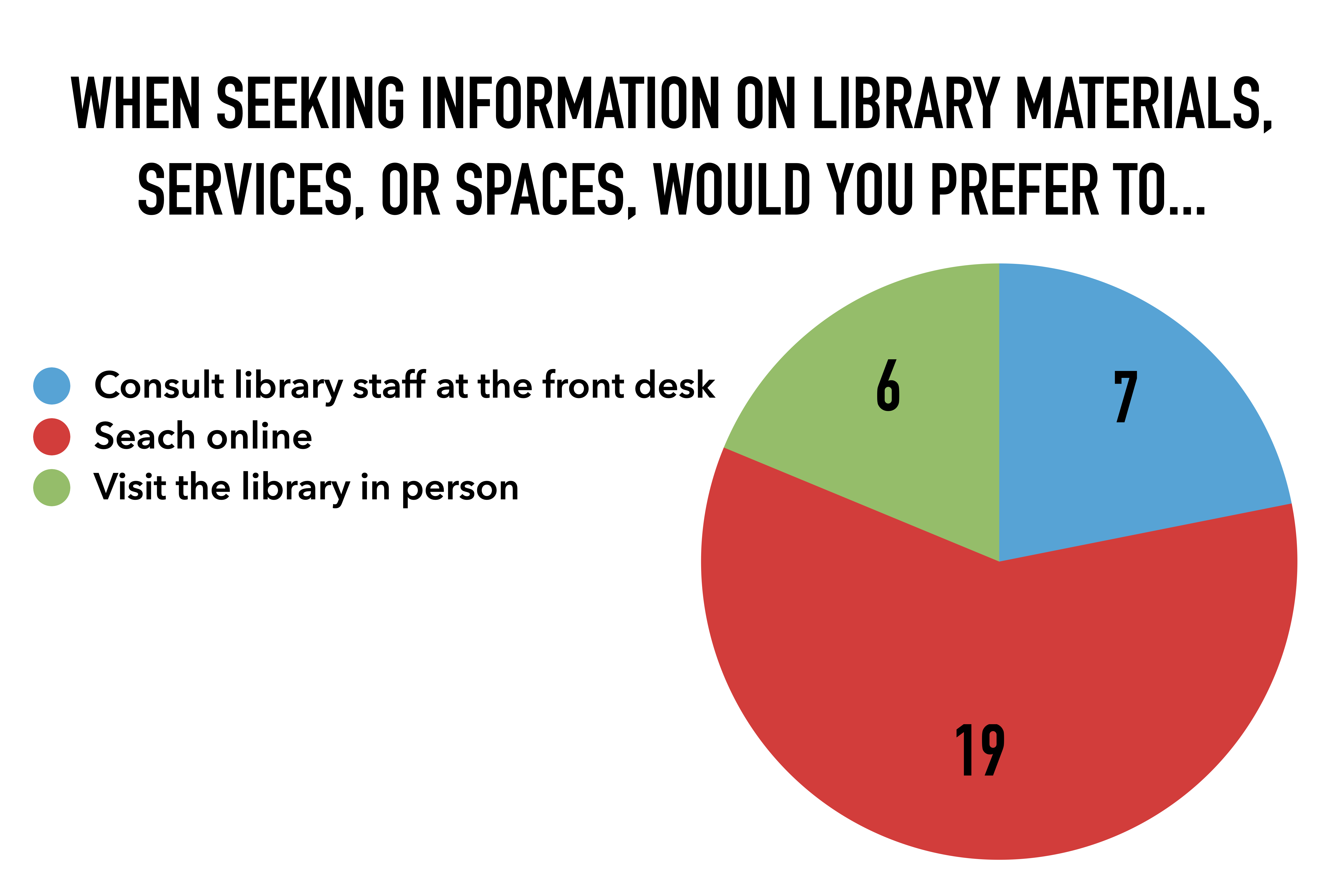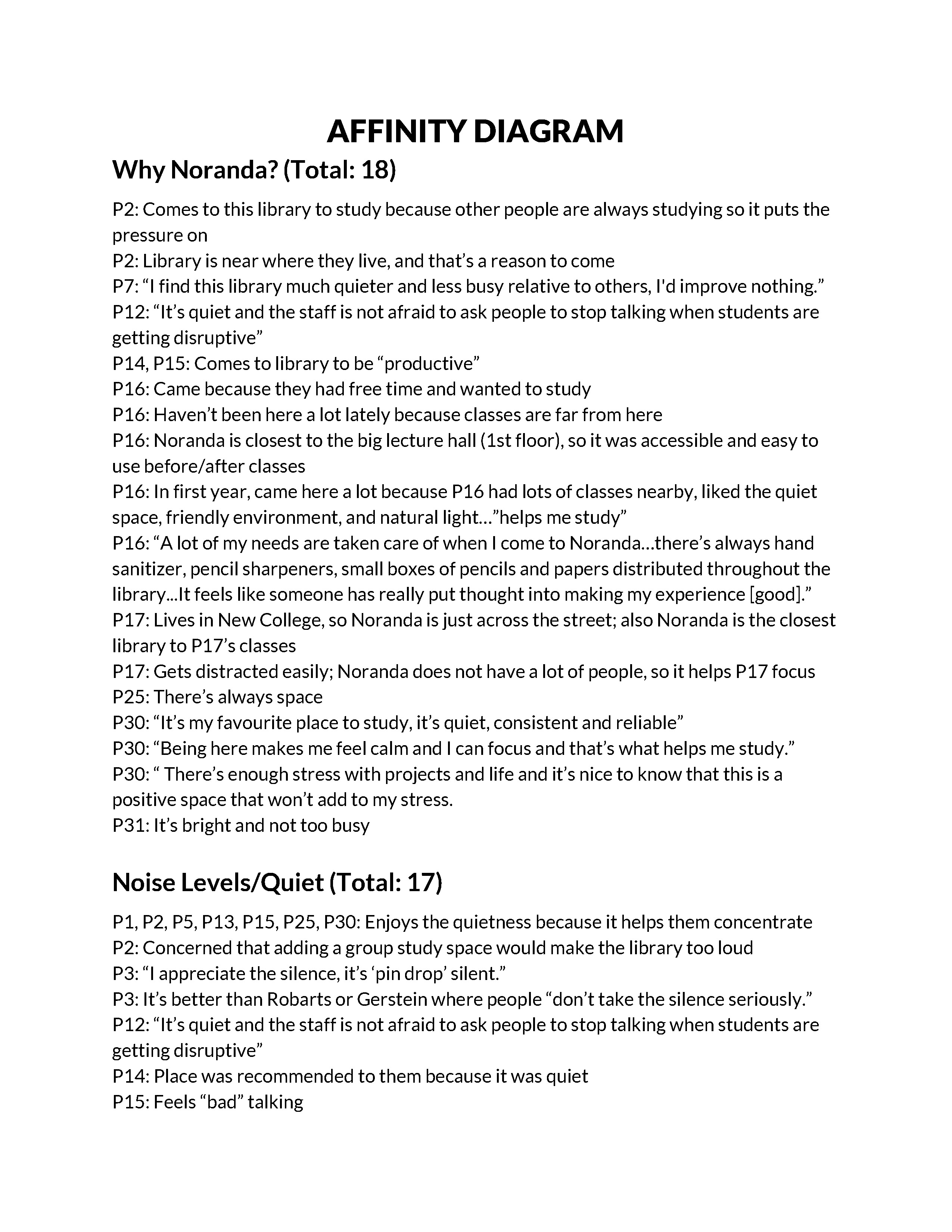The Noranda Earth Sciences Library is one of the seventeen libraries within the central University of Toronto Libraries system. Located in downtown Toronto, it is a small, two-floor library located within the Earth Sciences building.
As a Community-Engaged Learning (CEL) project in partnership between the Faculty of Information, University of Toronto and Noranda, my team and I designed and conducted a user experience research project over the course of January–April 2020. Our objective was to examine the existing library spaces and services toward develop an understanding of the current patron experience at Noranda.
After collecting, analyzing, and interpreting data from 32 surveys and 14 semi-structured interviews of library patrons, we suggested 11 UX recommendations toward facilitating a more positive experience at Noranda Earth Sciences Library.
